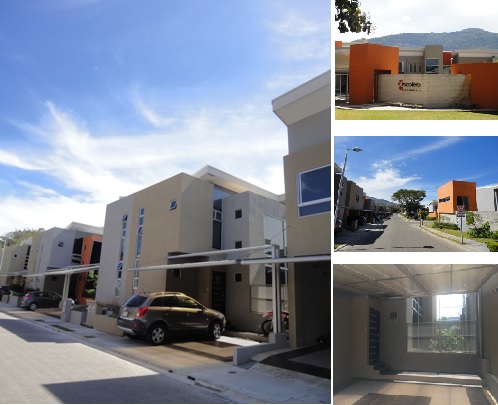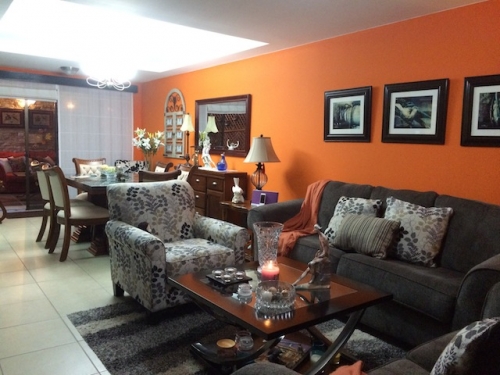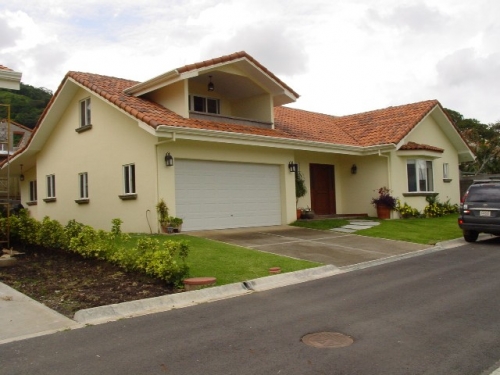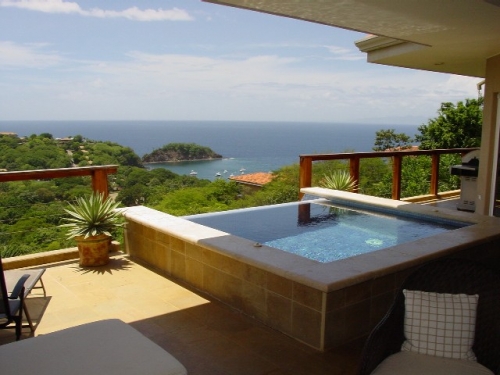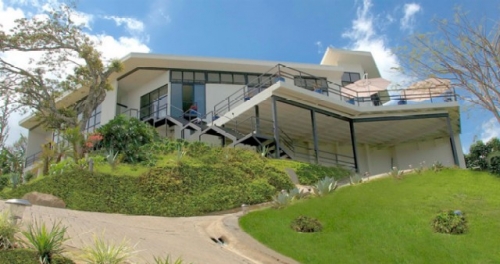Costa Rica Guide
Costa Rica Real Estate
List your property today!
Inclusion of real estate listings at Costa Rica Guide is
absolutely free of charge.
Featured Properties
Costa Rica Guide - Costa Rica Real Estate
Costa Rica's allure unending: Mountains, jungles, low costs
John Bordsen
Charlotte Observer
March 27, 2006
What's it like to live in a far-off place most of us see only on a vacation? Foreign Correspondence is an interview with someone who lives in a spot you may want to visit.
Bobby and Shelley Workman moved from Charlotte, N.C., to Matapalo, Costa Rica, last summer. Bobby, 34, sells real estate there; Shelley, 37, leads yoga classes on the beach. We spoke with Bobby on a recent weekday morning.
Q. What's it like outside right now?
A. The temperature is 85, with 85 percent humidity. There's a beautiful blue sky and it's really nice and breezy.
Q. Who do you sell real estate to?
A. A lot of Americans and Europeans looking for deals on beach and ocean-view property. Costa Rica is about the size of West Virginia and is pretty mountainous. There are beaches with nothing on them _ wild and open _ and a ton of mountains. In many ways, it's the last frontier.
Prices are all over the place _ on the beach, from $30,000 all the way up to California prices. Millions.
Q. What are the beaches like?
A. Many have dark sand created by volcanoes. There are some light-sand beaches, too. The beaches are really long and natural looking, with jungle almost leading up to it. I can see points off in the distance _ one is 20 miles off to the right, the other is 10 miles the other way. If I look back inland, I see mountains about a half-mile off.
Q. Is it developed where you live?
A. We're out in the country _ the "campo" _ between two developed towns. Even in developed areas, if you go out in the water and look at shore, the vegetation is so thick you can't see the developments.
I'm on a dirt road. There are seven or eight places to stay on the beach here, which is a couple miles long. It has a pretty native feeling; it's like we're in the middle of nowhere.
Q. Is it remote?
A. No. We're about four hours from San Jose, the capital, and there's a puddle-jumper flight that gets you there in 25 minutes. Farther south, on the Oso Peninsula, it's more remote. But even there, it's just a 45-minute flight to the capital.
It may feel remote here, but people can get Direct TV if they want it in their wooden shacks. Which they sometimes do.
Q. I've heard surfing is big where you are. True?
A. The country is pretty much all coastline, with surfing all along the Pacific _ where we are _ and Atlantic. It's why I first visited here eight years ago.
The waves are very consistent, compared to the U.S. East Coast. There's surfable surf every day; strong rip currents and big waves.
Q. Can you get boards down there?
A. A town called Jaco, a couple hours north, has lots of shops. The closest town to where we are is 45 minutes north and doesn't have much of a selection. The surf industry hasn't really picked up in this area.
Surf wear is really popular with kids and adults here. Boards are expensive for locals, so the Ticos _ the Costa Ricans _ don't surf a lot.
Q. What's the local scene?
A. Tourism is definitely building, but isn't huge here yet. Between here and the next big town north _ Manuel Antonio/Quepos _ are many small plantation towns where someone has put in a soccer field and houses around it. They're like mill towns where the houses all look alike. People work in mills and factories.
Manuel Antonio/Quepos is two towns next to each other. Quepos is larger. Manuel Antonio is the tourist town.
Where I am, in Matapalo, there are probably 500 people, Ticos and foreigners. About 75 live on the beach; the rest are inland, in the town.
Ticos work in construction, or maintaining property for gringos. Down here, by the way, "gringo" is not considered a derogatory term for an American.
Q. What's the food like?
A. Ticos eat a lot of rice and beans _ it's called "gayo pinto." Many have this for almost every meal. There's a rice and chicken dish, "arroz con pollo" that's like the chicken and fried rice at Chinese places. Their meat-and-two is called "casado"; basically, it's meat, rice and beans, plus a side dish _ maybe some tuna pasta salad or mashed potatoes. You choose your meat _ like a pork chop or piece of steak.
Q. Is it expensive to live there?
A. Very inexpensive.
We have a little house just off the beach; I can see it when I'm sitting on the front porch. For this we pay $150 a month. You can pay more in touristy towns.
It's a couple dollars to eat a good meal in a restaurant.
A couple things are expensive. Like cars. The tax is up to 75 percent of the value of the vehicle. Gas is more expensive: almost $4 a gallon. Electronics are expensive; this may be due to taxes, as well.
Q. Do the seasons change much?
A. There are two: winter and summer. Winter is rainy, and is from June to November. Summer is dry, and is December through May. Tourist season is mid-December through Easter. Tourism picks back up around July, when school is out in the States.
Manbual is a neat place for tourism. There's a national park on the beach there. People come to see monkeys and some amazing views from the hillsides. There are many good restaurants and things to do _ horseback riding, treetop canopy tours. ...
Q. What do you do in rainy season?
A. Just go outside when it's nice out _ the half day that it isn't raining.
You can be outside in the rain _ it isn't cold. Locals are outside doing their thing. My wife jogs in the rain.
Know someone who lives in an interesting city or country who would like to give us the inside line on visiting there? E-mail, in English, jbordsen@charlotteobserver.com.
(c) 2006, The Charlotte Observer (Charlotte, N.C.).
Note: The above information is not to be used for any other purpose other than private study, research, criticism or review. Thank you.

